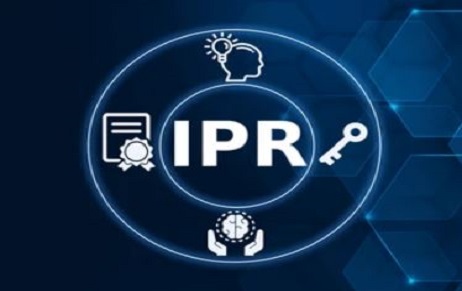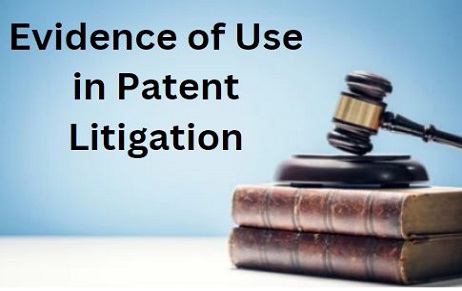Introduction The media and entertainment industry is a broad and ever-evolving domain that includes several…
Central Government’s power of Revocation of Patent in Public Interest
Gopikrishnan M and Akash Patel, interns at Khurana and Khurana, Advocates and IP Attorneys, look at the Central Government’s power of Revocation of Patent in Public Interest.
The Indian Patent Act,1970(hereinafter Act) empowers the Central Government to revoke any patent granted by the Indian Patent Office if it feels that the said patent is prejudicial to the public interest. There are two provisions in the Patent Act, 1970 which empowers the Central Government to revoke granted patents. One is Section 65 of the Act which gives power to the Government to give directions to the Controller to revoke a patent if the Government is satisfied that the invention is one relating to atomic energy for which no patent shall be granted.
Section 65 of the Act says:
65. Revocation of patent or amendment of complete specification on directions from Government in cases relating to atomic energy. –
(1) Whereat any time after the grant of a patent, the Central Government is satisfied that a patent is for an invention relating to atomic energy for which no patent can be granted under sub-section (1) of section 20 of the Atomic Energy Act, 1962, it may direct the Controller to revoke the patent, and thereupon the Controller, after giving notice, to the patentee and every other person whose name has been entered in the register as having an interest in the patent, and after giving them an opportunity of being heard, may revoke the patent.
(2) In any proceedings under sub-section (1), the Controller may allow the patentee to amend the complete specification in such manner as he considers necessary instead of revoking the patent.
Another important provision related to the Central Government’s power is Section 66 which empowers the Government to revoke the patent if it feels that the mode in which it is exercised is mischievous to the State or generally prejudicial to the public. In such cases, the Central Government has the power to revoke the patent but only after giving an opportunity to the patentee to explain why his patent should not be revoked. After such hearing, if the Government feels that the patentee could not explain why the invention does not affect the public interest, it can revoke the patent by making a declaration in the Official Gazette.
Section 66 of the Act says:
66. Revocation of patent in the public interest. –
Where the Central Government is of opinion that a patent or the mode in which it is exercised is mischievous to the State or generally prejudicial to the public, it may, after giving the patentee an opportunity to be heard, make a declaration to that effect in the Official Gazette and thereupon the patent shall be deemed to be revoked.
The provision has been used twice in India to revoke patents. The first instance was in the year 1994 and the second one happened way later in 2012.
Revocation of Agracerus’s Patent
The first instance was when a process patent was granted to Agracetus, a U.S. company, for genetically engineered cotton cell lines. Around the year 1994, this patent was revoked in the public interest because it was viewed as being prejudicial to farmers’ rights. The Govt was of the view that Cotton is an important crop essential to the national economy and should not be the subject matter of patents.
Indian Patent Number 168950 titled “A method of producing transformed Cotton Cells by tissue culture” was granted to Agracetus of the USA based on the patent application number 919 Cal 87 (filed on 24/11/1987) by the Indian Patent Office.
The main claim of the patent stated:
A method of producing transformed cotton cells by the method of tissue culture of immature cotton plants for generation into mature cotton plants, the process comprising exposing hypocotyl tissue of the same immature cotton plant on a medium to culture to transformation component non-oncogenic Agrobacterium tumefaciens and harboring a TI plasmid having a T-DNA region, including both foreign chimeric and a selection agent resistant gene.
No “pre-grant” opposition was filed by any party and the Patent Office ended up granting the patent. The implications of granting such a patent were realized later and there was mounting criticism from the farmer community that this patent was prejudicial to their interests as it would impact the farming of a major crop of national importance and have negative ramifications on the Indian economy. After China and the US, India is the world’s third-largest cotton producing nation. At least 190 million people in the developing world drive all or part of their cash income from cotton growing and handling.
Government Action
In October 1994, the Indian Government revoked Agracetus’s controversial patent on transgenic cotton. The Indian Government under Section 66 of the Patent Act decided to summarily revoke the patent, “because of its far-reaching implications for India’s Cotton economy”. The government observed that the patent would affect the farmers and the cotton industry which would eventually result in negative ramifications on the Indian Economy. Later the United States also followed suit and revoked Agracetus’s patent.
Revocation of Avasthagen’s Patent
The Second instance was during the year 2012 when the Government revoked Avasthagen’s Patent invoking the provisions of Section 66. Avasthagen had obtained patent protection for a medicine/tonic for controlling diabetes from the Indian Patent Office. This patent was granted for “synergistic ayurvedic/ functional food bioactive composition”. The patent was for the composition consisting of Jamun, lavangpatti, and chundun and this composition was to be used for the treatment of diabetes.
The government of India referred to the Traditional Knowledge Digital Library (TKDL) to revoke the patent. The patent which was granted in April 2012 was revoked on the grounds of being mischievous and prejudicial to the public.
Avesthagen filed for a patent in European Patent Office (EPO) for the above-said composition but when the examiners checked the patent with the TKDL database, they provided a report due to which the patent was not granted. The report said that the patent did claim subject matter disclosed by TKDL. CSIR had made individual intervention for the same. In April 2012 a patent was granted to Avesthagen and this was the same patent that was rejected by EPO. IPO said that they did not have access to the TKDL database that is why their examiners approved the patent.
Government Action
On getting knowledge about the same, the Government revoked the patent invoking Section 66 of the Act. The Government of India stated in revocation that the use of Jamun for the treatment of diabetes have been long known to India and thus the extract of Jamun will also give effective therapeutic activity for diabetes, and therefore the patent claims subject matter already disclosed and known in the public domain through the Traditional Knowledge of India.
Avesthagen argued stating that it might be a TK that these plants are used for treating diabetes but it was not known that when given in combination they show an aggressive effect. They also stated that by formulating the medicine, they have used an approach that is “innovative, noble and scientific” and screened the medicine for efficacy and safety using modern technology. On defending the patent, the company said that in developing formulation from 3 drugs they used a different approach. They told the DIPP that they had originally selected about 100 plants for the same, which was later shortlisted to 10. On patent being prejudicial to people, the Company said that the invention was novel and provided scientific validation to Indian TK and also said that they will support Indian farmers from whom the plant was bought and will provide employment to people.
The government countered it by saying that for centuries it was known that these plants were used for the management of diabetes and thus, this was not an invention. An official of the court stated that when plants are known to act against a particular disease, extracts would certainly perform the same function. The government also said that a patent cannot be granted for validating something that is part of TK.
The Central Government was not content with the arguments raised by Avasthagen and it revoked the Patent which was granted by the IPO.
Conclusion
If we look at the history of Section 66, it can be observed that the Government of India has invoked its powers to revoke patents only twice. In both situations, the Government ensured that public interest is not disturbed due to the grant of those patents. The section acts as a correctional provision and the Government is considered as the adjudicating authority, which ensures that the interest of the public is given more priority than personal interests. The public at large need not approach the Court every time for striking down every such patent. The presence of such provision hence lowers the burden on the Judiciary. Now that the Traditional Knowledge Digital Library is accessible to the Government, it is being anticipated by many that the Government may try to weed out more of such patents.



